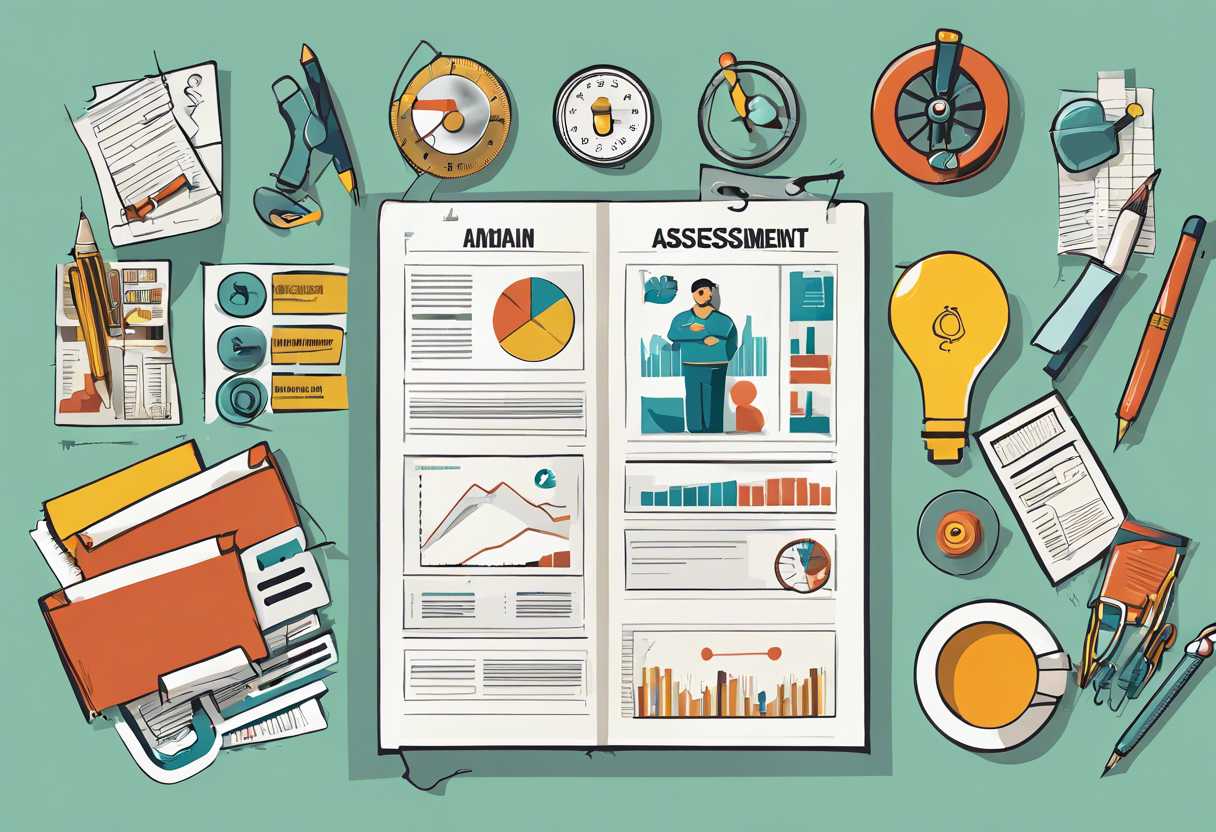Risk assessment and analysis play a crucial role in our daily lives, whether we realize it or not. From personal decisions to professional endeavors, understanding and evaluating potential risks can significantly impact the outcomes of our actions. In this blog post, we will explore the importance of risk assessment and analysis in everyday life, provide real-life examples of its application in various settings, and offer practical tips for implementing effective strategies. By the end of this post, you will have a comprehensive understanding of how to conduct a comprehensive risk assessment and analysis in your daily life, and how it can influence decision-making and problem-solving. So, let’s dive into the world of risk assessment and analysis and discover how it can shape our lives for the better.
Understanding the Importance of Risk Assessment and Analysis in Everyday Life
The Role of Risk Assessment in Personal Safety
Risk assessment plays a crucial role in ensuring personal safety in everyday life. Whether it’s assessing the potential risks of a new route for your daily commute, evaluating the safety of a new neighborhood, or analyzing the potential hazards of a new activity, understanding and conducting risk assessments can help individuals make informed decisions to protect themselves and their loved ones.
Risk Analysis in Financial Decision-Making
When it comes to financial decision-making, risk analysis is essential for individuals and businesses alike. Whether it’s evaluating the potential risks and rewards of an investment, assessing the financial stability of a business venture, or analyzing the potential impact of economic factors on personal finances, conducting thorough risk analysis can help individuals make sound financial decisions and mitigate potential losses.
The Importance of Risk Assessment in Health and Wellness
Risk assessment is also crucial in maintaining good health and wellness. Whether it’s evaluating the potential health risks of certain behaviors, assessing the safety of a new exercise routine, or analyzing the potential hazards of a particular environment, understanding and conducting risk assessments can help individuals make informed choices to protect their health and well-being.

Real-Life Examples of Risk Assessment and Analysis in Personal and Professional Settings
Personal Setting: Buying a New Home
When purchasing a new home, individuals often conduct a risk assessment to evaluate potential hazards and liabilities associated with the property. This may include analyzing the structural integrity of the building, assessing the neighborhood’s crime rate, and considering environmental factors such as flooding or natural disasters. By conducting a thorough risk analysis, homebuyers can make informed decisions and mitigate potential risks before making a significant investment.
Professional Setting: Project Management
In project management, risk assessment and analysis play a crucial role in identifying potential obstacles and developing strategies to mitigate them. For example, a project manager may conduct a risk assessment to evaluate the likelihood of budget overruns, delays in delivery, or resource constraints. By identifying these risks early on, project teams can proactively address them and minimize their impact on the project’s success.
Case Study: Risk Assessment in Healthcare
In the healthcare industry, risk assessment and analysis are essential for ensuring patient safety and regulatory compliance. For instance, healthcare organizations conduct risk assessments to identify potential hazards in their facilities, such as infection control protocols, medication errors, and patient falls. By implementing risk mitigation strategies, healthcare providers can enhance patient care and minimize adverse events.
| Risk Assessment | Risk Analysis |
| Identifying potential hazards | Evaluating the likelihood and impact of risks |
| Developing risk mitigation strategies | Assessing the effectiveness of risk controls |
Overall, risk assessment and analysis are integral components of decision-making processes in both personal and professional settings. By systematically evaluating potential risks and developing proactive strategies to address them, individuals and organizations can minimize the impact of uncertainties and make informed choices.

How to Conduct a Comprehensive Risk Assessment and Analysis in Your Daily Life
Understanding the Importance of Risk Assessment
When it comes to managing risks in your daily life, it’s crucial to understand the importance of conducting a comprehensive risk assessment. This process involves identifying potential risks, analyzing their potential impact, and developing strategies to mitigate or eliminate these risks. By conducting a thorough risk assessment, you can make informed decisions and take proactive measures to protect yourself and your loved ones.
Identifying Potential Risks
One of the first steps in conducting a comprehensive risk assessment is to identify potential risks in your daily life. This can include anything from health and safety risks to financial and security risks. By taking the time to identify these potential risks, you can better understand the areas of your life that may require additional attention and precaution.
- Health and safety risks
- Financial risks
- Security risks
Analyzing Potential Impact
Once you have identified potential risks, the next step is to analyze their potential impact. This involves considering the likelihood of these risks occurring and the potential consequences if they were to occur. By analyzing the potential impact of these risks, you can prioritize your efforts and resources to address the most critical areas of concern.
- Assessing likelihood of occurrence
- Evaluating potential consequences
- Prioritizing areas of concern
The Role of Risk Assessment and Analysis in Decision-Making and Problem-Solving
Understanding Risk Assessment
Risk assessment is a crucial process in decision-making and problem-solving. It involves identifying potential risks, analyzing their likelihood and impact, and developing strategies to mitigate or manage them. By conducting a thorough risk assessment, organizations can make informed decisions and solve problems effectively.
Importance of Risk Analysis
Risk analysis is an essential component of risk assessment. It involves evaluating the identified risks in terms of their potential consequences and the likelihood of occurrence. This step allows decision-makers to prioritize risks and allocate resources accordingly. Additionally, risk analysis helps in understanding the potential impact of different courses of action, enabling better decision-making.
Implementing Risk Assessment and Analysis
When implementing risk assessment and analysis, organizations should follow a structured approach. This may involve creating a risk register to document identified risks, conducting quantitative or qualitative risk analysis, and developing risk response plans. By following a systematic process, organizations can ensure that all potential risks are considered and addressed in decision-making and problem-solving.
Practical Tips for Implementing Effective Risk Assessment and Analysis Strategies in Your Life
Understanding the Importance of Risk Assessment
Risk assessment is a crucial process that allows individuals to identify potential hazards and evaluate the likelihood and severity of their impact. By understanding the importance of risk assessment, you can proactively manage and mitigate potential risks in your personal and professional life.
Developing a Structured Approach to Risk Analysis
When implementing effective risk assessment and analysis strategies, it’s essential to develop a structured approach. This involves identifying and prioritizing risks, analyzing their potential impact, and developing appropriate risk management plans. By following a structured approach, you can ensure thorough and comprehensive risk analysis.
Utilizing Tools and Techniques for Risk Assessment
There are various tools and techniques available to aid in risk assessment and analysis. These may include risk assessment matrices, decision trees, and scenario analysis. By utilizing these tools and techniques, you can enhance the accuracy and effectiveness of your risk assessment process.
Conclusion
Understanding the importance of risk assessment and analysis in everyday life is crucial for making informed decisions and minimizing potential negative outcomes. Real-life examples of risk assessment and analysis in personal and professional settings demonstrate the practical application of these concepts in various scenarios. By learning how to conduct a comprehensive risk assessment and analysis in your daily life, you can proactively identify and mitigate potential risks, leading to better problem-solving and decision-making.
The role of risk assessment and analysis in decision-making and problem-solving cannot be overstated. By incorporating these strategies into your daily routine, you can navigate challenges with confidence and make well-informed choices. Implementing effective risk assessment and analysis strategies in your life requires a proactive mindset and a willingness to embrace change. By following practical tips and guidelines, you can develop a proactive approach to risk management and enhance your overall well-being.
As you continue to apply the principles of risk assessment and analysis in your life, remember that it is an ongoing process that requires continuous evaluation and adaptation. By prioritizing risk management in your personal and professional endeavors, you can create a safer and more secure environment for yourself and those around you. Embracing a proactive approach to risk assessment and analysis will empower you to navigate life’s challenges with confidence and resilience.
Take the time to reflect on the insights shared in this blog post and consider how you can integrate risk assessment and analysis into your daily routine. By doing so, you can enhance your decision-making abilities and cultivate a proactive mindset that will serve you well in all aspects of life.
Remember, risk assessment and analysis are not just theoretical concepts – they are practical tools that can empower you to take control of your future. Embrace the opportunity to implement these strategies in your life and experience the positive impact they can have on your overall well-being.

